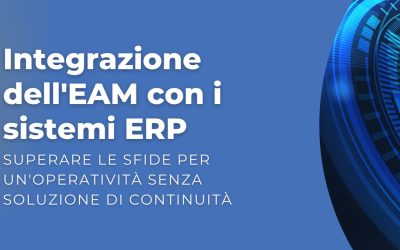News
Siamo sponsor di C.NEXT Ivrea: nasce il nuovo incubatore per l’innovazione nel Canavese
Siamo sponsor di C.NEXT Ivrea: nasce il nuovo incubatore per l’innovazione nel CanaveseSiamo orgogliosi di annunciare la nostra partecipazione come sponsor al lancio di C.NEXT Ivrea, il nuovo incubatore d’impresa che prende vita all’interno delle storiche Officine ICO...
Premio Olivetti 2025: un riconoscimento che ci rende orgogliosi
Premio Olivetti 2025: un riconoscimento che ci rende orgogliosiSiamo felici e profondamente onorati di aver ricevuto, nell’ambito della terza edizione del Premio Camillo e Adriano Olivetti all’Impresa Innovativa e Responsabile, un riconoscimento che premia non solo...
Webinar: Parità di genere in azienda: dal valore alla certificazione – Festival dello sviluppo sostenibile 2025
Webinar: Parità di genere in azienda, dal valore alla certificazione – Festival dello sviluppo sostenibile 2025Siamo entusiasti di annunciare che anche quest’anno abbiamo partecipato al Festival dello Sviluppo Sostenibile, la più grande manifestazione italiana sulla...
Netsurf: Innovazione e Collaborazione con Università e Fondazioni
Netsurf Innovazione e Collaborazione con Università e FondazioniNella giornata di martedì 15 aprile, alle ore 17:00, presso sede dell'Università degli Studi di Torino, via Monte Navale di Ivrea, si terrà il secondo Innovation Talk dell'anno organizzato da C.Next Hub...
Netsurf ottiene la certificazione per la parità di genere
Netsurf ottiene la certificazione di Parità di Genere!In linea con i nostri valori e il nostro impegno per la realizzazione di un futuro più inclusivo e più equo, abbiamo deciso di intraprendere un percorso di certificazione di un Sistema di Gestione della Parità di...
Evento lancio: “La digitalizzazione al servizio di efficienza e sostenibilità”
Evento lancio: "La digitalizzazione al servizio di efficienza e sostenibilità"Nella giornata di giovedì 5 dicembre si è tenuto presso la sala consiliare di Confindustria Canavese il nostro evento lancio in collaborazione con Message in cui abbiamo presentato le nostre...
HxGN EAM è stato riconosciuto leader di mercato da Verdantix
HxGN EAM è stato riconosciuto leader di mercato da VerdantixHxGN EAM della divisione Asset Lifecycle Intelligence di Hexagon è stato nominato leader di mercato nelle soluzioni di enterprise asset management (EAM) nel Green Quadrant: Enterprise Asset Management...
Webinar: Dal campo al Bilancio di Sostenibilità – Mese della Manutenzione 2024
Webinar: Dal campo al Bilancio di Sostenibilità: i dati al servizio di un'azienda sostenibile ed efficiente - Il Mese della Manutenzione 2024In occasione del Mese della Manutenzione organizzato da A.I.MAN e TIMGlobal Media, di cui siamo sponsor ufficiali, terremo il...
Un piano d’azione verso il futuro – La trasformazione digitale dei trasporti
Un piano d’azione verso il futuro: la trasformazione digitale dei trasportiIl settore dei trasporti è in rivoluzione. Dall'ascesa dei veicoli elettrici (EV) all'integrazione dell'intelligenza artificiale (AI) e dell'Internet of Things (IoT), la trasformazione digitale...
Netsurf contribuisce alle borse di studio STEM per 14 studentesse canavesane
Netsurf contribuisce alle borse di studio STEM per 14 studentesse canavesane!In collaborazione con Confindustria Canavese, Netsurf ha aderito all'iniziativa promossa dal Gruppo IDC e del Gruppo ICT nell’ambito del progetto nazionale STEAMiamoci con l’obiettivo di...
HxGN EAM per la produzione multisito – Migliori pratiche per operazioni senza interruzioni
EAM per la produzione multisito: Migliori pratiche per operazioni senza interruzioniLa gestione di attività produttive in più siti non è un compito facile. Se da un lato avere strutture in sedi diverse può offrire un vantaggio competitivo, dall'altro presenta sfide...
L’integrazione di HxGN EAM con i sistemi ERP – Superare le sfide per un’operatività senza soluzione di continuità
Come la gestione delle risorse aziendali migliora la lean production Vi siete mai chiesti come collegare senza problemi i vostri sistemi di gestione patrimoniale e finanziaria? L'integrazione dei sistemi di Enterprise Asset Management (EAM) con i sistemi di Enterprise...
Come la gestione delle risorse aziendali migliora la lean production
Come la gestione delle risorse aziendali migliora la lean productionLa lean production si basa sulla gestione efficiente degli asset: ridurre gli sprechi, ottimizzare i processi e garantire che ogni aspetto della produzione aggiunga valore, per questo l'Enterprise...
Il futuro della logistica – Integrare EAM con il TMS per raggiungere l’eccellenza operativa
Il futuro della logistica – Integrare EAM con il TMS per raggiungere l'eccellenza operativaNella logistica e nella gestione della supply chain, l'integrazione dell'Enterprise Asset Management (EAM) con i sistemi di gestione dei trasporti (TMS) si distingue per le...
Sponsor ufficiali Festival Musicale Rosario Scalero
Sponsor ufficiali del Festival Musicale Rosario Scalero!Siamo sponsor ufficiali del Festival Musicale Rosario Scalero! Dopo un anno di stop, torna in grande stile il Festival con un ambizioso programma in diciassette appuntamenti dal 18 agosto al 25 gennaio. “Le...
EAM per la Regolamentazione sul Food and Beverage
EAM per la Regolamentazione sul Food and Beverage - Una Ricetta per il Successo Normativo SemplificatoNella produzione di alimenti e bevande, la conformità e le regolamentazioni sono cruciali. Tuttavia, i sistemi di Gestione degli Asset Aziendali (EAM), con i loro...
CamperOnline, un successo da oltre 25 anni!
CamperOnLine, un successo da oltre 25 anni!Leggi l'intervista di Camper Professional a Paolo Bertino di CamperOnLine! Dietro i numeri che rendono CamperOnLine la testata italiana online più importante del settore c’è un solo segreto: le persone che hanno contribuito a...
La guida completa alla gestione del ciclo di vita degli asset con HxGN EAM
La guida completa alla gestione del ciclo di vita degli asset con HxGN EAMLa gestione efficiente del ciclo di vita degli asset è una colonna portante delle operazioni di successo in tutti i settori. Dall'acquisizione alla gestione, fino alla manutenzione e allo...
Netsurf e Kroll sanciscono una partnership strategica unendo le rispettive competenze relative alla gestione degli asset aziendali
Netsurf e KROLL stringono una nuova partnership per integrare le rispettive competenze e creare nuove sinergie ed efficienzeNetsurf, azienda italiana specializzata in soluzioni tecnologiche per la manutenzione, facility management e IoT, e Kroll, società leader nella...
Webinar: Asset Management: oltre la manutenzione – EuroMese della Manutenzione 2024
Webinar: Asset Management: oltre la manutenzione - EuroMese della Manutenzione 2024In occasione dell'EuroMese della Manutenzione organizzato da A.I.MAN e TIMGlobal Media, abbiamo tenuto un webinar dal titolo: ASSET MANAGEMENT: OLTRE LA MANUTENZIONEun approccio...
EAM nel settore farmaceutico per ottimizzare la manutenzione e il ciclo di vita degli asset
EAM nel settore farmaceutico per ottimizzare la manutenzione e il ciclo di vita degli assetNel settore farmaceutico, mantenere l’efficienza operativa rispettando i rigorosi standard normativi è una necessità. L’importanza delle prestazioni di manutenzione nella...
L’importanza delle analisi predittive, della manutenzione e dell’IoT nella gestione degli asset industriali
L’importanza delle analisi predittive, della manutenzione e dell’IoT nella gestione degli asset industrialiL’Internet delle Cose (IoT) scende in campo al fianco dell’analisi predittiva attraverso i sistemi di Enterprise Asset Management (EAM) e rivoluziona il settore...
Webinar: Misurare è un’azione sostenibile – Festival dello sviluppo sostenibile 2024
Webinar: Misurare è un’azione sostenibile – Festival dello sviluppo sostenibile 2024In occasione del Festival dello Sviluppo Sostenibile, la più grande manifestazione italiana sulla sostenibilità promossa da ASviS (Alleanza Italiana per lo Sviluppo Sostenibile),...
Infor e Netsurf estendono la partnership strategica all’insegna dell’innovazione digitale
Infor e Netsurf estendono la partnership strategica all’insegna dell’innovazione digitaleNetsurf è il primo partner italiano a distribuire la soluzione Infor MES Infor, industry cloud company, e Netsurf, specializzata in soluzioni tecnologiche per la manutenzione,...
Premier Partner di Hexagon!
Premier Partner di Hexagon!Siamo entusiasti di annunciare i notevoli risultati che abbiamo raggiunto: Netsurf è stata riconosciuta come Premium Partner di Hexagon, tra i pochissimi in Europa.Questo prestigioso status non è solo un titolo: è una testimonianza della...
La produzione non è mai stata così efficiente!
La produzione non è mai stata così efficiente!Leggi la nostra intervista per la rivista Meccanica di Cristina Golfarelli Oggi i dati sono una risorsa imprescindibile per qualsiasi realtà produttiva. Infatti se opportunamente raccolti e integrati tra loro, i dati di...
Come è cambiata la comunicazione web nell’era dell’Intelligenza Artificiale?
Come è cambiata la comunicazione web nell’era dell’Intelligenza Artificiale?Difficili scelte delle foto e snervanti ricerche su Google addio! La comunicazione web ha ora un potente alleato: l’Intelligenza Artificiale (AI). Grazie all’intelligenza artificiale,...
Convegno Smart Digital Reality e Asset Management ad MCMA 2023
Convegno Smart Digital Reality e Asset Management ad MCMA 2023Di nuovo presenti a MCMA, la fiera della Manutenzione industriale e Asset Management dal 18 al 19 ottobre presso il Centro Congressi "Palaexpo" di Veronafiere (vedi mappa), stand 131/135, insieme ai nostri...
Black Friday e Natale, due ottime occasioni per il tuo business
Black Friday e Natale: due ottime occasioni per il tuo business!Non ti sei ancora lanciato nelle vendite online o hai un prodotto del tuo e-commerce che vuoi far decollare? Niente di meglio che sfruttare due appuntamenti “caldi” della grande stagione dello shopping....
ACRONIS la soluzione di Backup anti-malware antivirus
ACRONIS la soluzione di Backup anti-malware antivirusAlzi la mano chi non ha paura di perdere i propri dati o chi, anche solo una volta, non ha mai perduto file importanti. Attacchi informatici, guasti hardware, semplici errori. Sono tanti i rischi che possono...
Evento di confronto e approfondimento su HxGN EAM
Evento di confronto e approfondimento su HxGN EAMIl 20 giugno 2023 abbiamo organizzato un importante evento di confronto e approfondimento sulla piattaforma HxGN EAM presso il nostro decennale cliente Buzzi Unicem. Siamo molto soddisfatti dell’esito di questa...
Webinar “Manutenzione e Sostenibilità: un binomio inscindibile” – 25/05/23
Webinar “Manutenzione e Sostenibilità: un binomio inscindibile” – 25/05/23Giovedì 25/05 la nostra Marketing and Sales Support Giuliana Massa, in occasione del Mese della Manutenzione, ha tenuto il webinar dal titolo “Manutenzione e Sostenibilità: un binomio...
Google Business Profile, cos’è e perché è utile!
Google Business Profile, cos’é e perché é utile!Conosci il profilo dell'attività di Google? Il Profilo dell’attività di Google, ex Google My Business, è una scheda che le aziende possono attivare gratuitamente sul motore di ricerca Google. Un servizio molto utile ad...
Nuova versione TOOLS+
Nuova versione TOOLS+!È ora disponibile la nuova versione di TOOLS+ , che raccoglie, integra e aggiorna i plug-in Doc+™ e ActiveGantt™ realizzati da Netsurf per HxGN EAM. Le caratteristiche principali della versione tp05 sono: compatibilità con EAM 12.0: per...
Fiera Madonnino – 24 Aprile 2023
Fiera Madonnino – 24 Aprile 2023Lunedì 24 Aprile abbiamo partecipato all’evento organizzato da Confindustria Toscana Sud: Fiera del Madonnino – L’agricoltura digitale! Un evento di riferimento per tutto il settore agricolo, tanto che sono stati raggiunti numeri da...
Scopri se il tuo sito ha successo online ed ottieni (anche gratis) Google Analytics 4!
Scopri se il tuo sito ha successo online ed ottieni (anche gratis) Google Analytics 4!Il tuo sito web ha successo? Quante persone lo visitano? Riesci a sapere qual è il tuo pubblico? Se il tuo sito web è stato realizzato ed è gestito da Netsurf, la risposta è “SI”....
Netsurf partecipa al PMI Day!
Netsurf partecipa al PMI Day!Anche quest’anno Netsurf ha aderito al PMI Day - Industriamoci, il progetto organizzato da Confindustria in occasione della giornata nazionale delle piccole medie imprese. L’iniziativa vede ogni anno dal 2010 piccole e medie imprese...





































